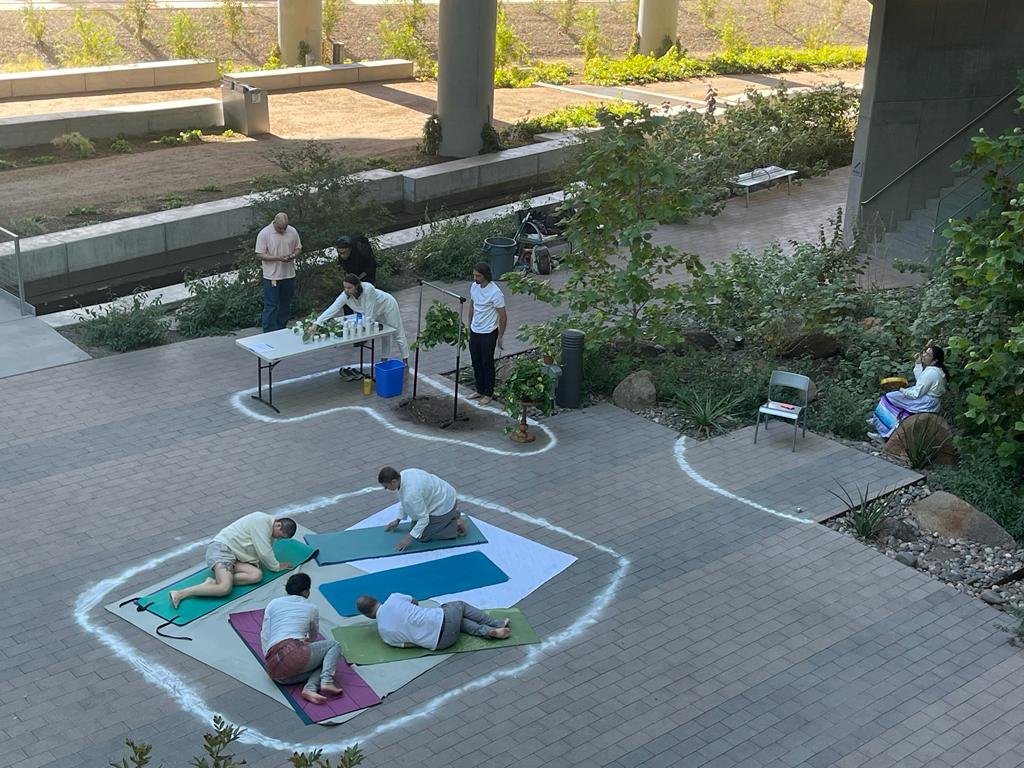Projects / the earth will catch us
the earth will catch us/ the drum will lift us, 2022
Durational Performance + livestream
(Nov 21, 2022)
›› Co-Creator, Collaborative Performer ››
(Part of the series: Data Humanization Project)
ARTISTs’ STATEMENT
200 land and environmental defenders around the world were killed in 2021*
More than 50% of these killings were of indigenous peoples.
These land defenders courageously resist land seizures by mining, agribusiness interests and infrastructure projects (including those that support so-called “green” energy); and work to tend, protect and conserve lands from deforestation and poaching.
On Monday November 21, 2022, we will gather to commemorate these relatives and honor their sacrifice. As we enact a simple gesture, falling to the ground, we weep for these losses; our bodies echoing the fallen trees of the Amazon; the earth catching us each time.
As we approach our National Day of Mourning (aka Thanksgiving), we rise as well, to the beat of the drum which represents our heart, and the resilience of indigenous and land-based peoples in the face of greed and domination.
*according to Global Witness, an ongoing effort to track and monitor violence related to land rights. From their 2021 report: “We define land and environmental defenders as people who take a stand and carry out peaceful action against the unjust, discriminatory, corrupt or damaging exploitation of natural resources or the environment.” More than 1700 killings have been documented over the past 10 years. These numbers reflect only verified deaths, with many more disappearances and killings unreported due to conflict, restrictions on a free press and civil society, and lack of independent monitoring of attacks on defenders.
“the earth will catch us / the drum will lift us” grew out of the Fall 2022 Indigenous Sustainability Solutions course SOS 594 at Arizona State University and was inspired by the Data Humanization performance series.
The Data Humanization series emerges from the field of data visualization and big data analytics, in which large and complex datasets are presented through visual effects that render them “readable.” In contrast to this trend, each 'data humanization' performance seeks to physically “translate” a single datapoint so that it can be more fully comprehended. Chosen data points are numbers that trouble or baffle the artist, and that she seeks to imprint within her body. She invites audiences to serve as witnesses and aids. With this performance, Jenik shared her practice methodology with fellow students, who co-created the commemorative action.




